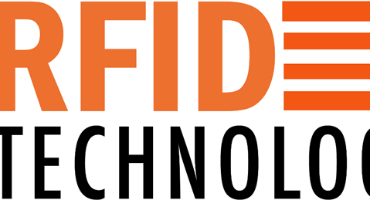RFID (Radio-Frequency Identification) technologies is a fast automatic identification system that uses radio waves to wirelessly transmit data between a RFID tag label and a RFID reader.
An RFID system typically includes a RFID tag (containing a microchip and antenna), a RFID reader device, and software to process the data. Unlike barcodes, RFID tags don't need a direct line of sight to be read, allowing for the identification and tracking of people, assets, animals, and products, and are widely used in inventory management, supply chain logistics, and security systems.
How RFID Technology Works -
RFID Label Tag: Each RFID tag contains a microchip that stores data, including a unique identification code.
RFID Reader: The RFID reader device sends out an electromagnetic pulse.
Data Transmission - When the tag receives the pulse from the reader, it is powered on (in the case of passive tags) and broadcasts its stored data back to the reader using radio waves.
Data Processing - The reader receives the data and sends it to a host computer, where software processes and interprets the information, often for tracking or management purposes.
Different Types of RFID Label Tags:
Passive Tags:
These tags are powered by the energy from the reader's radio waves and have a limited read range but require no internal battery.
Active Tags:
Active tags contain their own battery, allowing them to transmit signals over a much greater distance and with higher power than passive tags.
Common Uses of RFID Technology
Asset and Inventory Tracking:
Businesses use RFID to monitor inventory, manage supply chains, and track valuable assets.
Supply Chain Management - RFID Technologies provides real-time visibility of goods as they move through warehouses and distribution centers, helping monitor origin and destination.
Security and Access Control - RFID is used in security access cards and for tracking people and equipment.
Retail & Supply Chain - The technology is employed for inventory management, self-checkout systems, and even frictionless retail experiences where items are scanned automatically.
Animal and Livestock Tracking - RFID microchips can be implanted in livestock and pets for positive identification.
Benefits of RFID Technologies
Increased Efficiency - RFID systems can quickly scan hundreds of objects simultaneously.
Accuracy and Real-time Data - They provide a high level of accuracy and real-time data for tracking and inventory and provides full visibility in real-time.
No Line-of-Sight Required - Unlike barcodes, RFID tags can be read without a direct line of sight, even if embedded within an item or obscured by packaging.
Time Savings - Automation through RFID reduces the need for manual scanning and intervention.
Radio Frequency Identification (RFID) technology uses radio waves to transmit data between a tag and a reader to identify and track objects. It is a form of automatic identification that can scan multiple items simultaneously without a direct line of sight, unlike barcodes.
Everything you need to know about RFID technology -
RFID technology - how RFID Technology works, benefits and applications
Understanding RFID - How Radio Frequency Identification Works
A Comprehensive RFID Card Guide To Understand The Technology
RFID Technology: Key Benefits for Inventory Tracking
How RFID technology works
An RFID system has three main components that work together to track items:
RFID Tags: Tags, also called transponders, are electronic devices that contain a microchip storing a unique serial number and other programmable data. A tag also has an antenna for communication.
RFID Readers: Readers, also known as interrogators, are network-connected devices that can be portable or fixed in one location. They send radio wave signals to the tags and receive their responses.
RFID Antennas: Antennas convert the reader's signal into RF waves to activate tags and then send the tag's data back to the reader.

